How we built a podcast studio at TRITON IT
At TRITON IT, we believe that sharing knowledge and experience is not an enhancement of competition, but a demonstration of competence, which is why we decided to expand our activities with a new channel - podcasts. These will allow us to pass on valuable information, opinions and inspiration not only from ourselves, but also from our partners and friends. Our aim is to offer you a deeper insight into the technical and business challenges we encounter on a daily basis, and to showcase the projects we are working on. We look forward to bringing you something more through our podcasts.
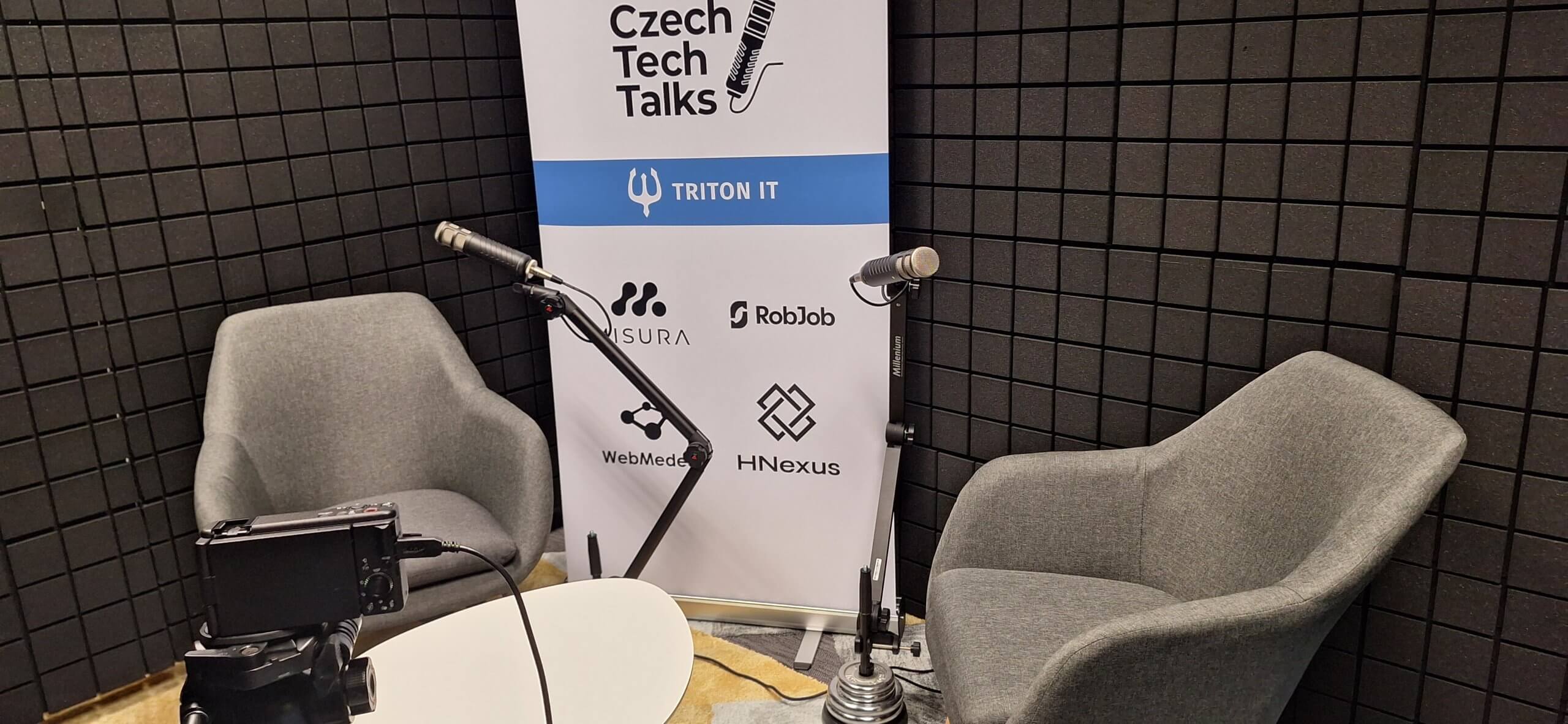
What motivated us?
We had several motivations for creating the podcasts.
1. We have interesting partners and friends around us. As time went on, our conviction to share their perspectives on the technical and business challenges we solve with them grew stronger. Including their forecasts, which gave us a slight chill when we filled them in.
2. We are creating several software projects. After many meetings, when we heard over and over again, "How come I didn't know you were making applications like this until now?" or "Now I finally see what WebMedea will be useful for!" or "Could you also make me an internal Holding Nexus system?" or "Why don't you say that anywhere?" In these situations, it didn't even make sense to use the arguments "You didn't see our banner or post on the networks?" or "You haven't read our stories?" It was clear that we would replace the dozens of explanatory meetings by talking about our projects ourselves.
3. The marketing landscape is constantly changing, and the aforementioned banners and static social media posts are no longer the universal means of grabbing attention. In addition, social media posts, banners and adverts require shorthand. And although the art of abbreviation is a key marketing skill, abbreviation is not always the best communication tool. Especially, for example, for a target audience of qualified B2B executives who have a technical background and like to go more in-depth. With the declining willingness of the population to read long articles, a video/audio podcast is just the right method for providing broader context.
4. As well as for our own projects, we were motivated by the opportunity to offer our studio or interview management capacity to our clients. Or rather, to offer our studio for sharing with interesting projects.
Why own a podcast studio?
Accessibility and economy of scale were key for us. If we agreed that podcast production was important for several of our projects at the same time, we realized that having our own studio was the only economically feasible solution. This is especially true given that we fund many of our projects ourselves. Rather than being willing to pay a margin to a third party, we are more concerned with whether or not we can afford to outsource the creation of audiovisual content to a sufficient extent.
How was the construction of the studio?
1. Premises
One of the reasons we moved to Zličín was the easy scalability of our offices. Therefore, once we had agreed on the plan to build a studio, it was no easier than calling Mr. Bryscejn at Central Group and ordering another room on the floor. However, we were limited by the layout of the space - a 6 x 3 meter room. A narrow, long room, with a door on one side and a large window on the other.
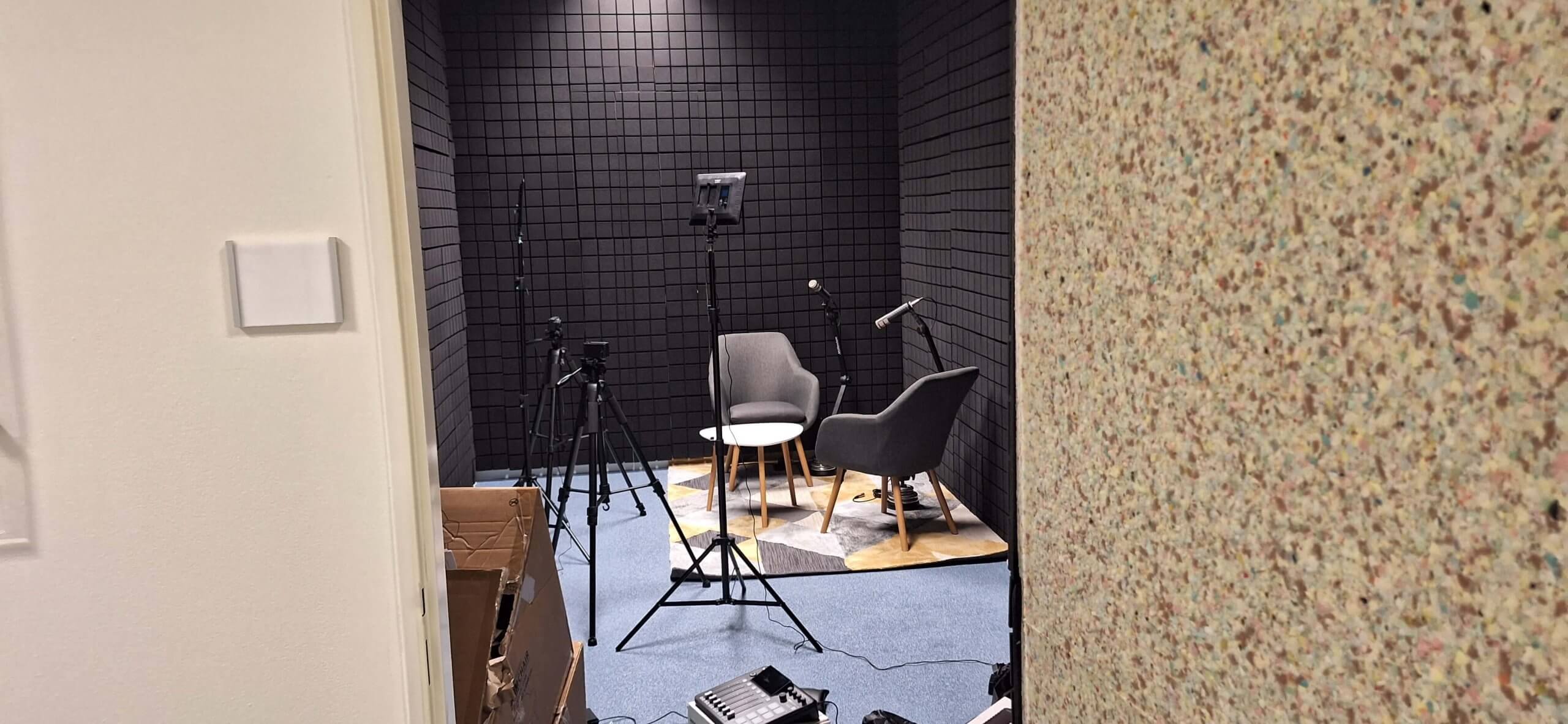
2. Expert advisor
It was clear to us that if we chose the trial-and-error route, we would lose a lot of time and money in building the studio. We started looking for experts to advise us. After several unsuccessful attempts and financially unacceptable offers, Antonín Pulkrab took us on. Our former colleague from TRITON IT, cameraman and editor from the Garage show on CT, who has been making professional videos for several years. Tonda was the only one who showed interest in coming to see the premises, which turned out to be essential for further progress.
3. Building modifications
Tonda measured the room and designed the future layout of furniture and equipment in the studio. At the same time he advised us that we needed to get rid of either the window or the door opposite. We hired Mr. Richard Kesel to do the craft work. We have known Mr. Kesel for many years and have ordered office remodeling from him on each of our previous moves. Mr Kesl suggested that, as access to the window and heating had to be maintained, he would partition the space between the window and the rest of the studio with a set of IKEA cupboards. He will fill in the missing space above the cabinets with particleboard. At the same time, they will create a 'secret door' in the cupboards to allow access to the window and heating. In one working day, Mr. Kesl was finished.
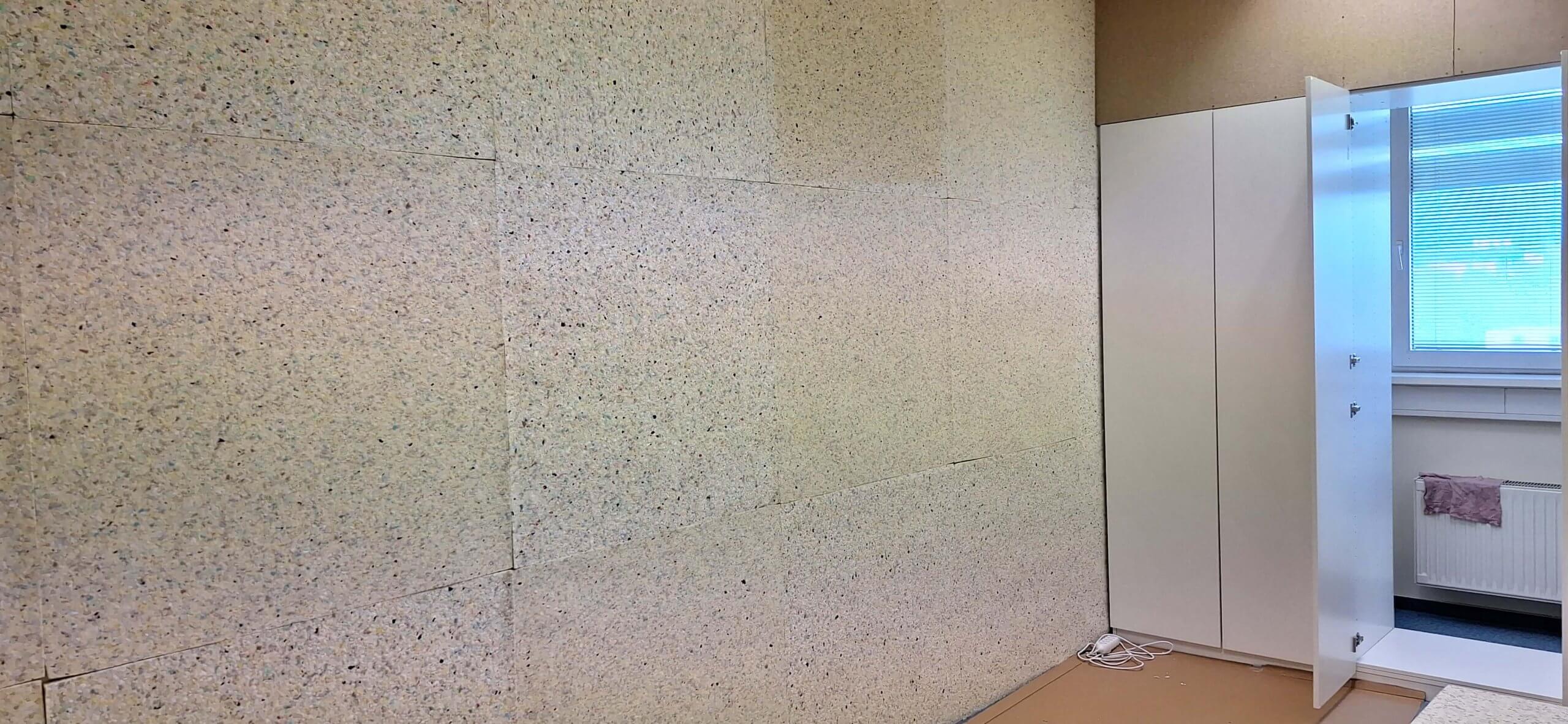
4. Soundproofing
Tonda warned us that due to the room's location in an office building with low sound insulation, the studio would need to be well insulated. He recommended we do the insulation in two layers. In the door and use acoustic moulded foam as the first layer. He had a good experience with Silent Foam 120, which we bought in the highest thickness on potichu.cz. As a second layer he recommended us Pyramid fix acoustic foam panels, which despite their name are square, not pyramid shaped, and with which Tonda achieved the greatest sound insulation during the construction of his previous studios. The installation of the soundproofing in two layers took Mr. Kesl two working days.
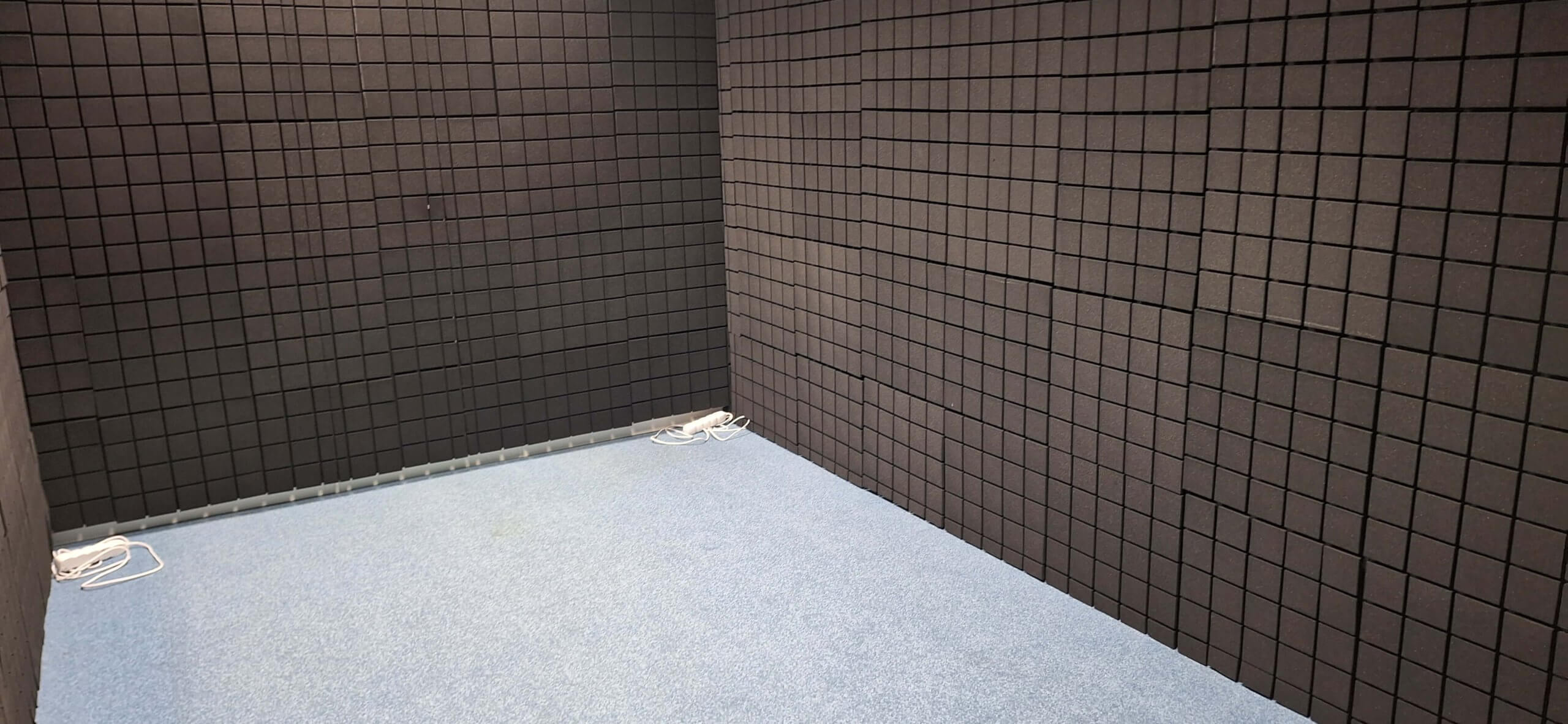
5. Furniture
In the studio, we decided to have an arrangement of two armchairs and one table. We chose the most suitable and tasteful ones at JYSK. We chose the carpet from a wide range at Bonami.
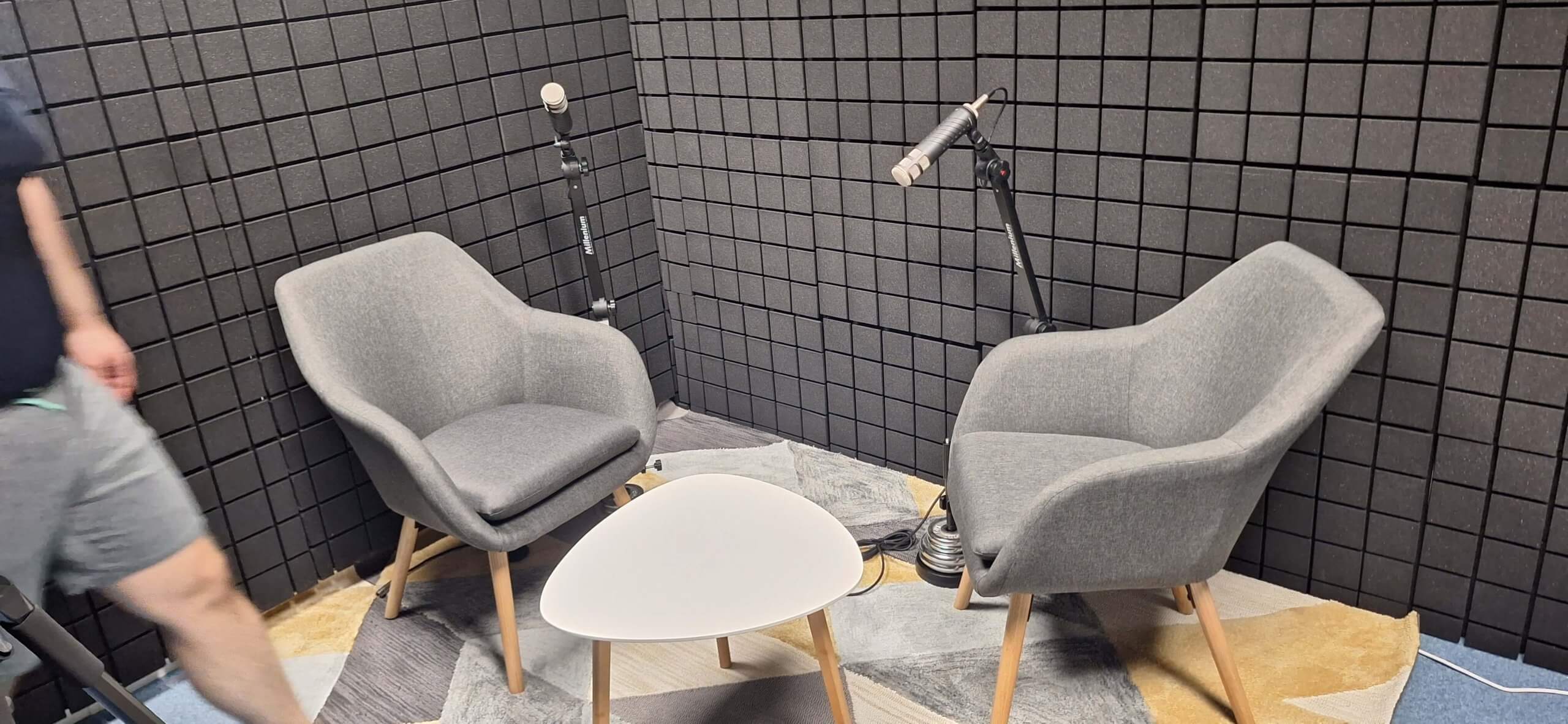
6. Sound equipment
For sound, Tonda recommended us 2x Rode Procaster and a Rode Rodecaster Pro II mixing console. Microphone mounting proved to be a bit of a challenge. We wanted to place the microphones on stable mounts next to the chairs, not on the table.
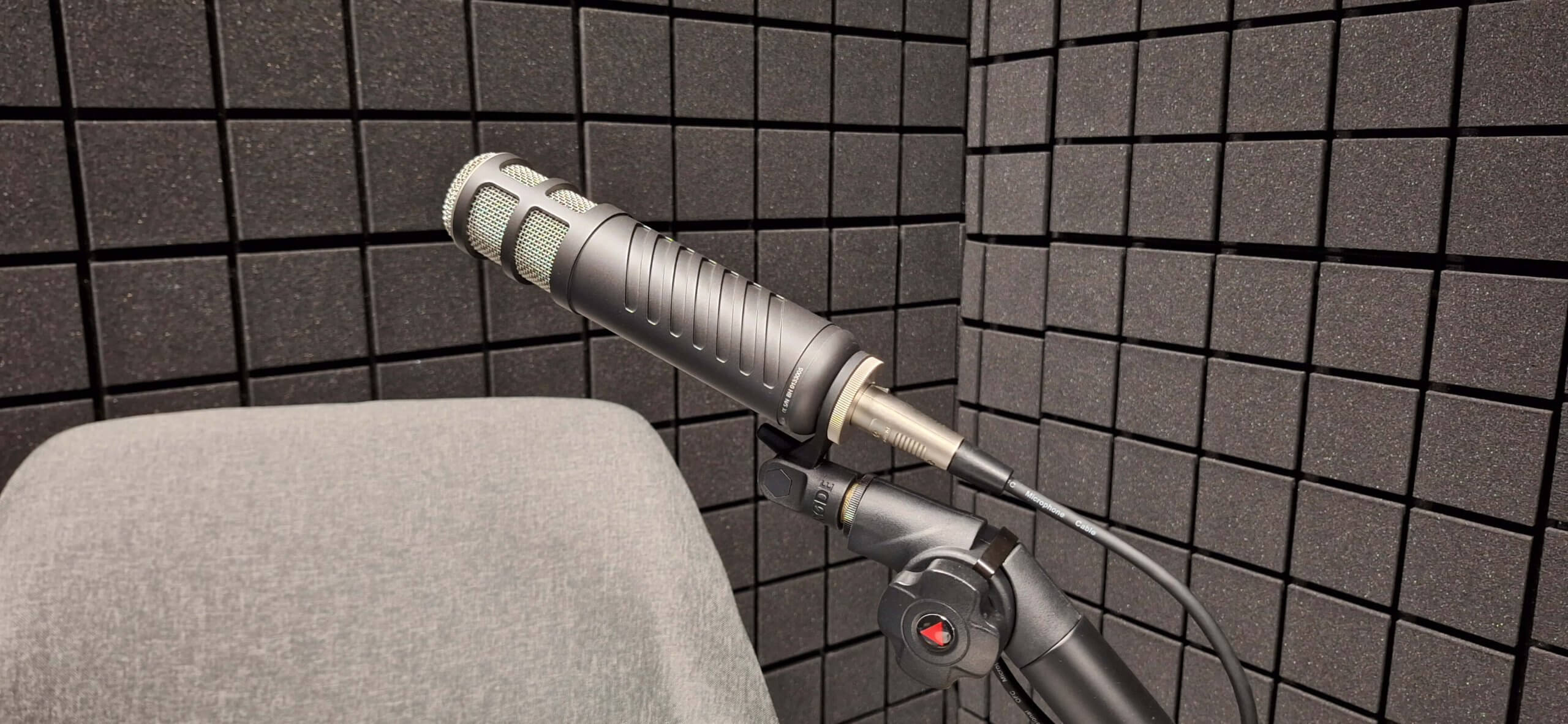
After a long search, we opted for the König & Meyer 233 telescopic stand-alone mounts. These are heavy on their own, but we still loaded them with weights from one-handed dumbbells. And on the telescopic holders we mounted the Millenium DS200 Black holders. For headphones for the Rodecaster, we chose the Sennheiser HD200 Pro.
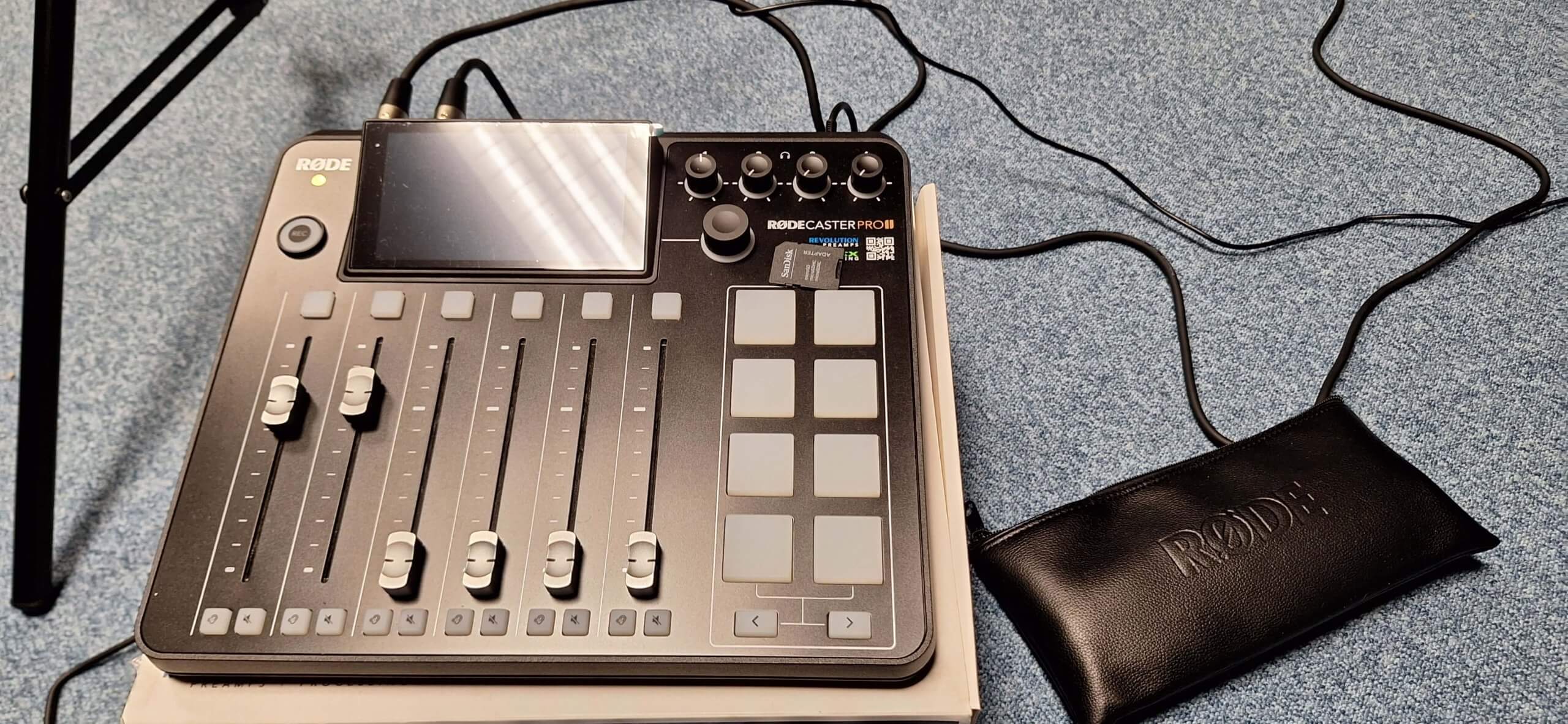
7. Cameras
We chose a two-camera setup. One camera captures both panelists. The second camera captures only the guest. Here we decided to go the most economical way and chose Sony Vloger Alpha ZV-E10 cameras. For the cameras we then purchased two Video tripods for the DSLR 180 cm.
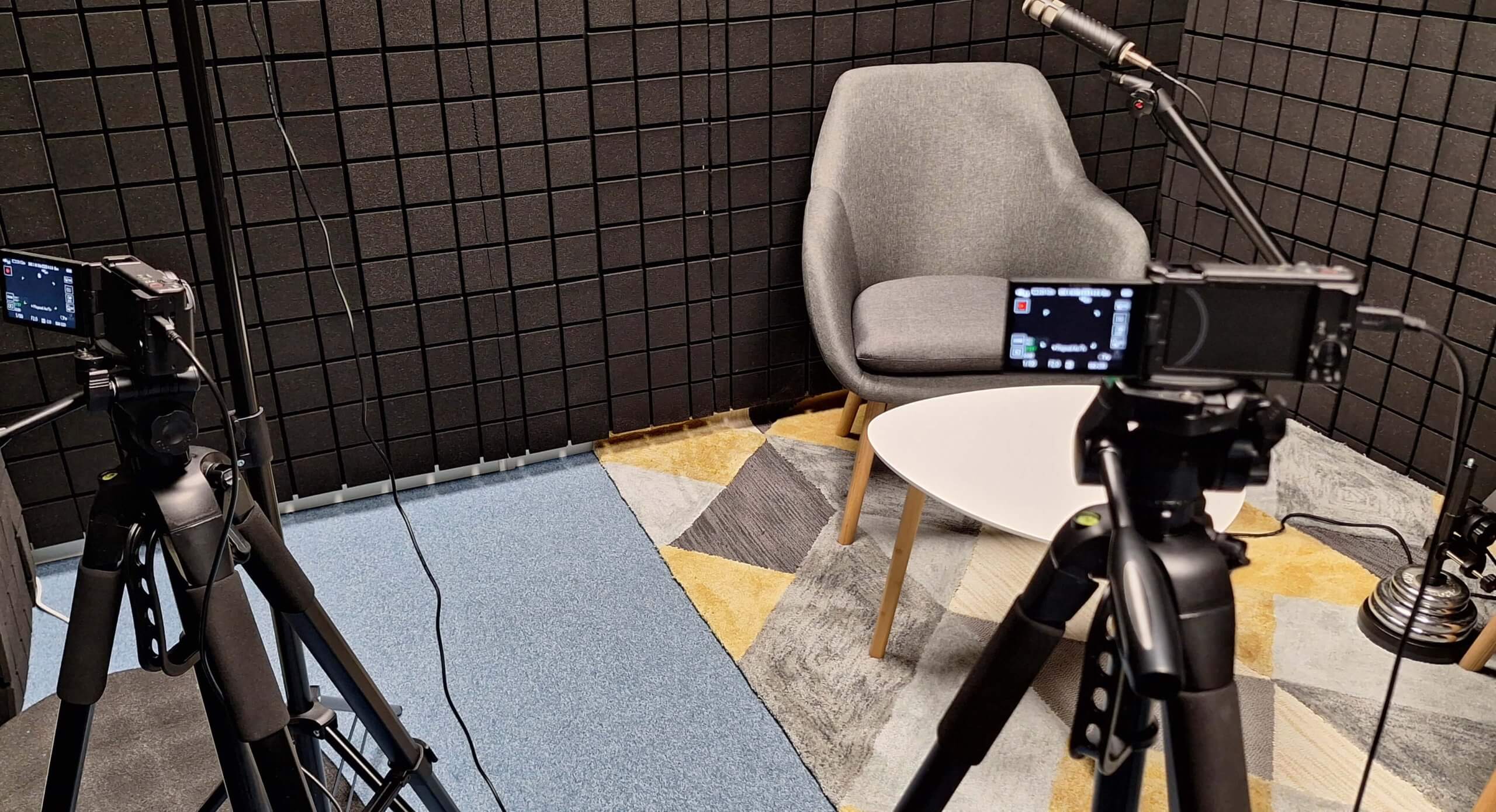
8. Lighting
Tonda pointed out to us that the light in the office room did not have suitable parameters. Moreover, if it is on, it "buzzes". As the best price/performance ratio, we finally chose a set of RGB LED Weeylite Sprite 20 lights from film-technika.com. The set has excellent controls, including a remote. It is possible to change the brightness, color temperature and tone of the light.
What else?
We are now intensively preparing our podcast, which we have called Czech Tech Talks.

Do you want to use the capacity of our studio? Or advice on setting up your own?
Related articles
The Czech Association of Artificial Intelligence (CAUI) approached us at the end of the summer to help promote its AI Transformation in Healthcare...
On Friday 10 October, we went to Prague’s Radlice, where the Innovation Week 2025 took place in the modern environment of the ČSOB Campus,...
Are you planning to build or already running custom applications, software solutions or robust systems that have increased hardware requirements?...